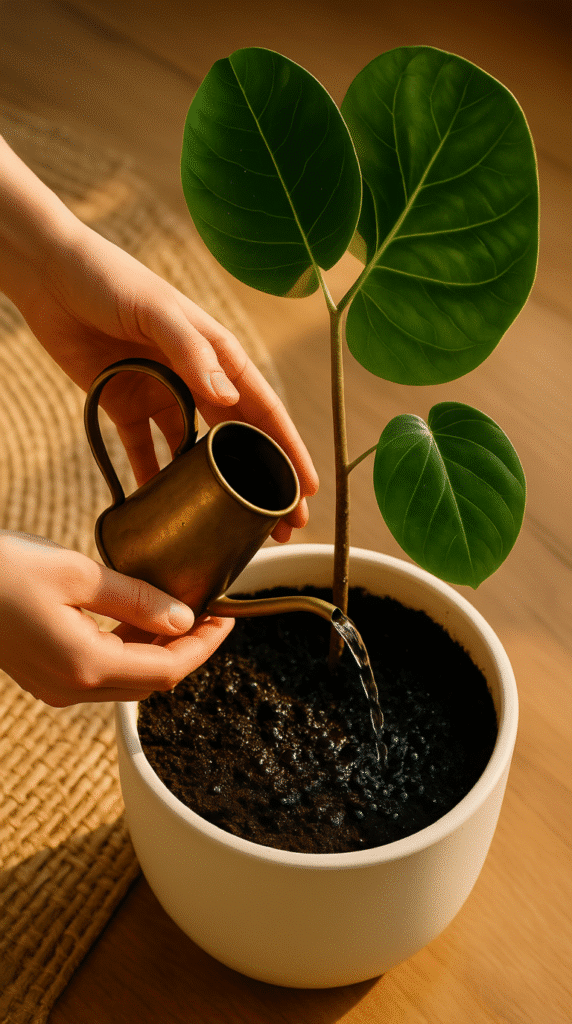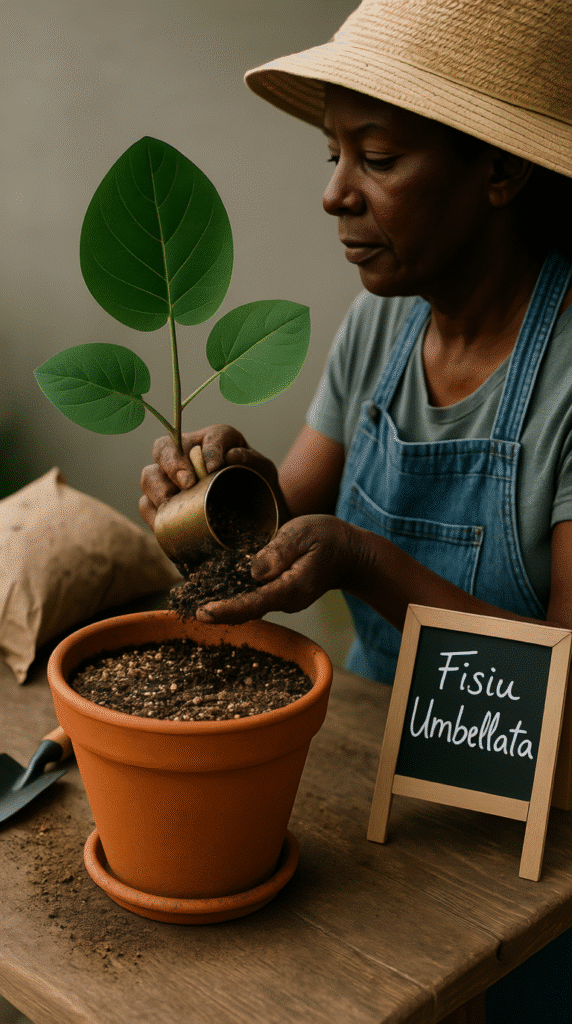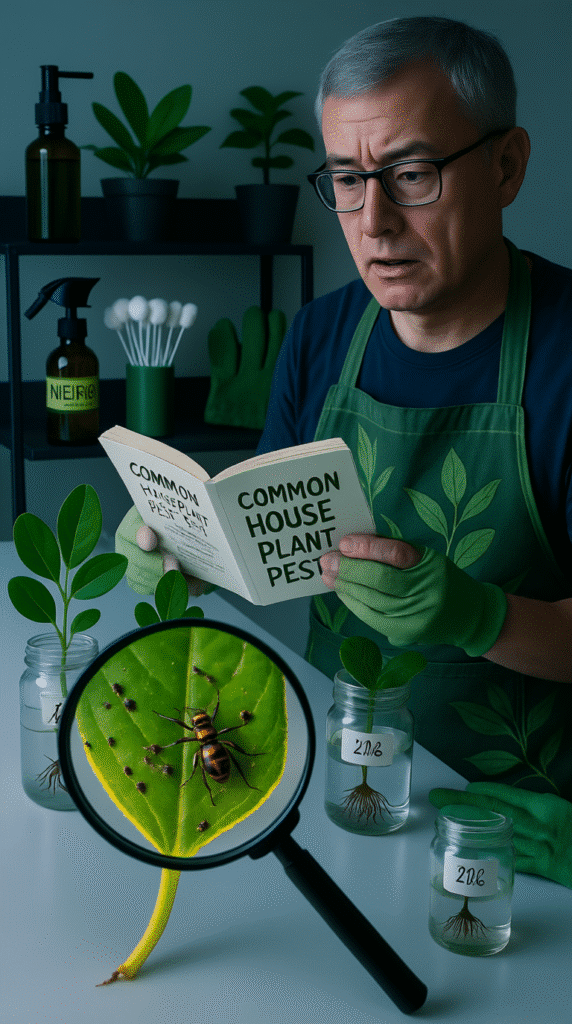Ficus umbellata, often called the umbrella fig tree, is a tropical beauty with glossy, heart-shaped leaves and a graceful, upright form. Native to West Africa, this plant has become a favorite among indoor gardeners worldwide. But keeping it happy? That’s a bit of an art.
Light: The Right Kind of Shine

Ficus umbellata loves light. But not the harsh kind. Direct sun? Nope. It’ll burn those lovely leaves. Instead, aim for bright, indirect light. A spot near an east or west-facing window works wonders. If your home’s a bit dim, consider a grow light. It’ll help your plant thrive.
Watering: Not Too Much, Not Too Little

Watering is where many go wrong. Ficus umbellata doesn’t like soggy roots. But it also doesn’t want to dry out completely. The trick? Let the top 1–3 inches of soil dry out before watering again. Use room-temperature water and ensure your pot has drainage holes. Standing water is a no-no. If the leaves turn yellow or mushy, you might be overwatering. If they’re crispy or curling, it could be underwatering.
Soil: Keep It Well-Drained

A good soil mix is essential. Use a well-draining potting mix. A blend of peat, perlite, and standard potting soil works well. You can also add some sand for additional drainage. This ensures the roots don’t sit in water, preventing root rot.
Temperature: Warm and Cozy

This plant is a tropical native, so it enjoys warmth. The ideal temperature range is between 65°F and 85°F (18°C to 29°C). Keep it away from drafts, air conditioners, and sudden temperature drops. Avoid placing it near heaters or cold windows in winter. Consistent warmth is key to its happiness.
Humidity: Keep It Moist

Ficus umbellata thrives in humidity levels above 50%. Dry indoor air can cause brown leaf tips and edges. To boost humidity, place a humidifier near the plant, use a pebble tray filled with water, or group plants together to create a microclimate. Avoid placing near air conditioners, heaters, or drafty windows.
Fertilizing: Feed It Right

During the growing season (spring and summer), feed your ficus monthly with a balanced, water-soluble fertilizer. Dilute it to half strength to avoid burning the roots. Reduce or stop fertilizing during autumn and winter when the plant’s growth slows down. Over-fertilizing can harm the plant, so less is more.
Pruning: Shape It Up

Pruning isn’t strictly necessary, but it helps control size and encourages branching. Remove any yellowing, dead, or damaged leaves regularly. If the plant gets too leggy or tall, prune in spring or summer. Use sharp, sterilized scissors to avoid spreading diseases. Cutting just above a node encourages new growth.
Repotting: Give It Room to Grow

Ficus umbellata tends to grow quickly and may need repotting every 1–2 years. Choose a pot that is one size larger when repotting and refresh the soil. Spring is the best time to repot. Signs your plant needs repotting include roots growing out of drainage holes, soil drying out too quickly, or stunted growth.
Propagation: Start New Plants

Propagating is a fun way to grow your plant collection. Stem cuttings in water are the easiest method. Take a 3–5 inch cutting with at least 3 nodes and one healthy leaf. Remove the bottom leaves, leaving the top leaf intact. Place the cutting in a jar of water, ensuring at least one node is submerged. Keep it in bright, indirect light and change the water weekly. After 3–6 weeks, roots should appear. Transfer to well-draining soil. Using rooting hormone can speed up the process.
Pests and Problems: Watch Out

Ficus umbellata can be susceptible to common houseplant pests like spider mites, mealybugs, and scale. Inspect the plant regularly and treat with insecticidal soap or neem oil if necessary. If your plant drops leaves, it could be due to stress from changes in light, temperature, or watering patterns. Adjust care as needed and ensure consistency in its environment.
Toxicity: Handle with Care

Ficus umbellata is toxic to pets and humans if ingested. Keep it out of reach of curious pets and children. The sap can also cause skin irritation, so wear gloves when handling the plant.
Final Thoughts
Caring for Ficus umbellata is a rewarding endeavor. With the right light, water, and attention, it can flourish and become a stunning focal point in your home. Remember to monitor its health regularly, adjust care as needed, and enjoy the beauty it brings to your space. Happy gardening!
